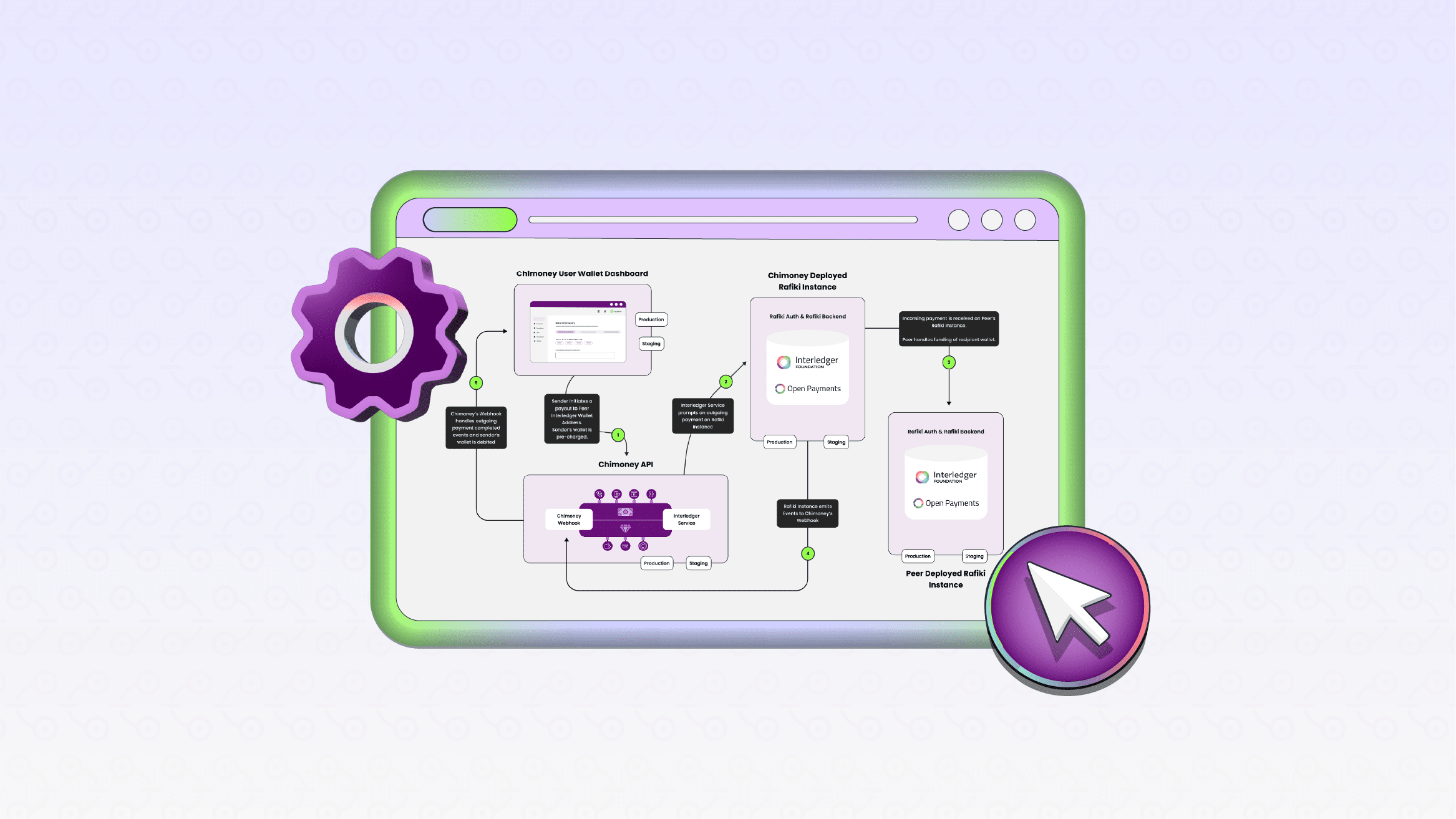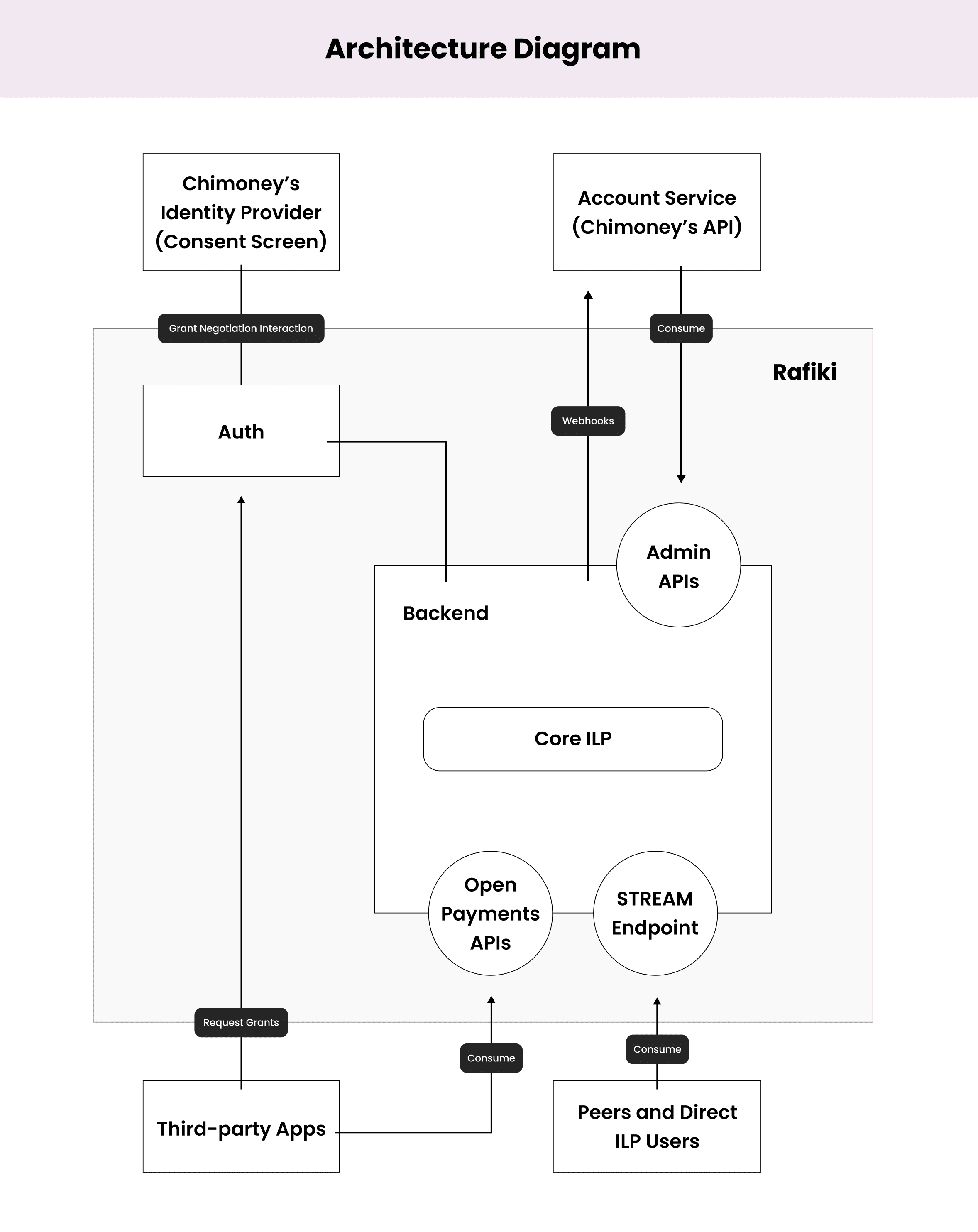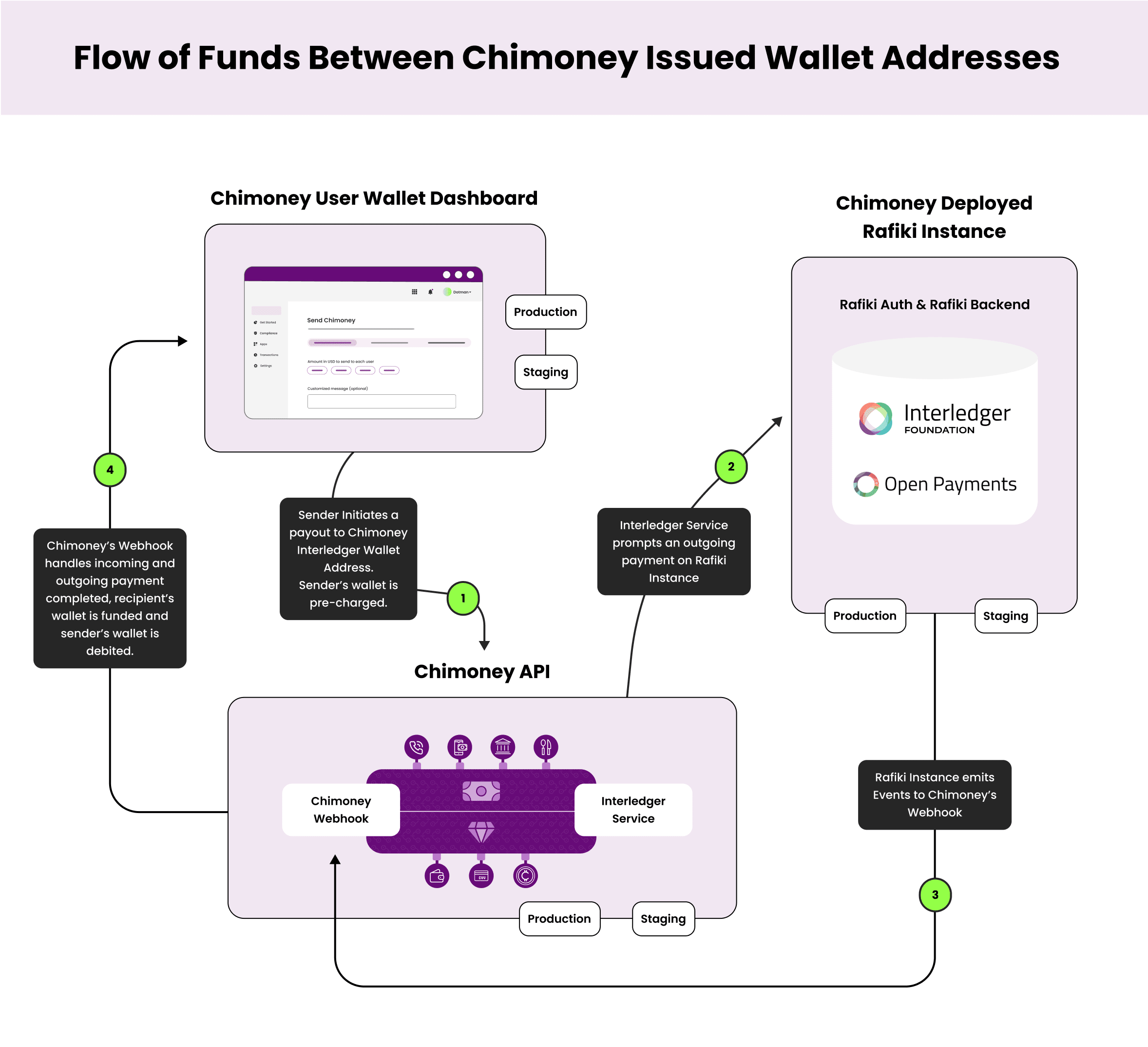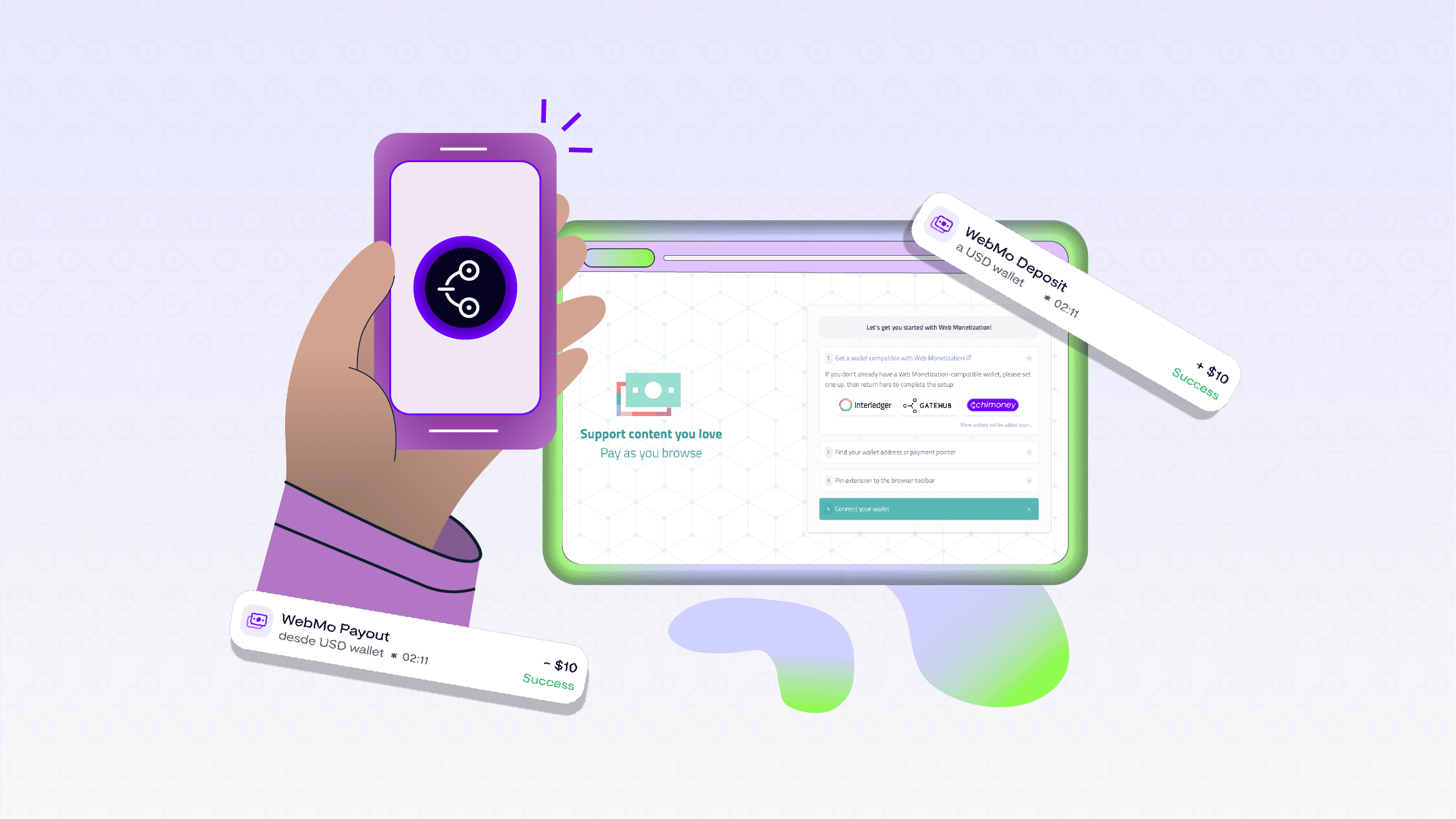
Optimizing Payment Infrastructure for Financial Institutions: A Technical Deep Dive into Chimoney's Interledger Integration
Financial institutions face growing pressure to modernize payment infrastructure amid rising demand for fast, low-cost cross-border transactions. They must balance legacy systems with modern demands for instant, cross-border settlements while maintaining security, compliance, and cost-effectiveness. The fragmentation of global payment systems has created a complex ecosystem where institutions struggle to provide seamless experiences across different currencies, jurisdictions, and payment rails.
This article explores how Chimoney's integration with the Interledger Protocol (ILP) offers financial institutions a solution to these challenges, providing a technical analysis of the architecture, implementation considerations, and strategic advantages of adopting this technology stack.
The Current State of Payment Infrastructure
Traditional payment infrastructure within financial institutions typically consists of:
- Core Banking Systems: Often decades-old technology handling account management and ledger operations.
- Payment Processors: Specialized systems for handling various payment types (ACH, wire transfers, cards).
- Correspondent Banking Networks: Relationships facilitating cross-border transactions.
- Settlement Systems: Mechanisms for finalizing transactions between institutions.
These systems frequently operate in silos, leading to inefficiencies such as:
- Long settlement times (T+1 to T+3, where "T" refers to the transaction date and the number indicates how many business days until settlement) for many cross-border transactions.
- High operational costs from maintaining multiple integration points.
- Liquidity management challenges across different currencies and systems.
- Complex reconciliation processes.
- Limited visibility into end-to-end transaction status.
The Interledger Protocol: Technical Foundation
The Interledger Protocol represents a paradigm shift in payment infrastructure design. At its core, ILP is:
- A packet-switching protocol for money: Similar to how IP routes data packets across networks, ILP routes payment packets across financial networks.
- Network-agnostic: Operates across any payment system, cryptocurrency, or fiat currency.
- Connectionless: Does not require persistent connections between participants.
- Settlement-agnostic: Works with any settlement method agreed upon by adjacent nodes.
Key ILP Components
- Connectors: Network nodes that forward packets between different ledgers.
- Packets: Small units of value transferred with accompanying data.
- STREAM Protocol: Application layer protocol for sending money and data.
- Payment Pointers: Standardized payment addressing scheme (similar to email addresses for payments).
- Open Payments: API standard for initiating and receiving payments.
Chimoney's Interledger Implementation

Chimoney has implemented ILP, allowing financial institutions to integrate directly with Chimoney's endpoints without needing to build their own Interledger implementation. This dramatically simplifies adoption, reducing technical complexity and accelerating time-to-market.
Chimoney provides two powerful API endpoints that make Interledger integration seamless:
-
Issue Payment Pointers: Financial institutions can integrate the Interledger Protocol into their platform without deploying Rafiki or their own node. This endpoint allows institutions to issue custom Payment Pointers to their users, enabling use cases such as Web Monetization, Open Payments, and cross-border transactions.
-
Pay with Payment Pointers: This endpoint enables users to send and receive payments using Payment Pointers across different currencies and jurisdictions without requiring financial institutions to deploy their own Rafiki node. Institutions can build powerful payment capabilities using Chimoney's Interledger API.
These endpoints are supported by Chimoney's comprehensive Interledger implementation consisting of three major components, all fully operational and ready for financial institutions to connect with:
-
Chimoney Identity Provider (Consent Screen): Manages user authentication and consent flows for third parties interacting with Chimoney's Rafiki deployment via Open Payments.
-
Account Service (Chimoney's API Interledger Service): Acts as the bridge between Chimoney's systems and the Interledger Protocol, handling all the complex interactions with the ILP network.
-
Chimoney's Rafiki Deployment: The core ILP infrastructure that handles the routing, packet switching, and settlement processes.
Technical Implementation Considerations
Integration Approach for Financial Institutions
Financial institutions can connect to Chimoney's Interledger-enabled services through these straightforward methods:
-
Issue Payment Pointers API: Integrate this endpoint to issue custom Payment Pointers to users, enabling numerous use cases without any Interledger infrastructure requirements.
-
Pay with Payment Pointers API: Implement this endpoint to allow users to send and receive payments across currencies and jurisdictions using Payment Pointers.
-
Peering Relationship: For institutions with more advanced requirements, establish a peering connection with Chimoney.
The integration process is streamlined since financial institutions don't need to:
- Deploy their own Rafiki nodes.
- Build consent screens.
- Implement complex ILP packet handling.
- Manage the technical complexities of the Interledger Protocol.
Flow of Funds

Chimoney's implementation supports several key transaction flows, all accessible through their simple API endpoints:
- Between Chimoney Issued Wallet Addresses:
- A user initiates a payout to a supported Interledger Wallet Address.
- The funds flow through Chimoney's pre-built Interledger infrastructure.
- All complex routing and settlement is handled automatically.
- Chimoney to Peer / Peer to Chimoney:
- Transactions between Chimoney and its peers are denominated in USD.
- Financial institutions can leverage this existing infrastructure rather than building their own.
- Chimoney to Third Party App:
- Third parties can communicate with Chimoney's Interledger Infrastructure using Open Payments.
- The entire consent flow and transaction processing is handled by Chimoney's components.
Peering with Chimoney
For financial institutions that want to establish a direct peering relationship with Chimoney (rather than just using their API endpoints), the process is well-defined:
- Running an Interledger connector (e.g., Rafiki).
- Agreement on USD as the asset for the peering relationship.
- Communication of static ILP addresses.
- Exchange of connector endpoints and authentication tokens.
However, many institutions can benefit from Chimoney's Interledger capabilities without needing to establish a peering relationship, simply by integrating with their API endpoints.
Strategic Advantages for Financial Institutions
Implementing Chimoney's ready-to-use Interledger solution provides financial institutions with several competitive advantages:
- Rapid Time-to-Market:
- Avoid the complexity of building their own ILP implementation.
- Integrate Payment Pointers functionality in days or weeks, not months.
- Focus resources on their core business rather than technical infrastructure.
- Leverage Chimoney's expertise in Interledger technology.
- Reduced Settlement Risk and Costs:
- Benefit from Chimoney's pre-charge approach that minimizes settlement risk.
- Take advantage of established event-driven processing.
- Access optimized liquidity management across different corridors.
- Reduce operational costs through streamlined integration.
- Enhanced Interoperability:
- Issue and accept Payment Pointers across different systems.
- Access Chimoney's established network of peers.
- Leverage Open Payments compatibility.
- Future-proof their payment infrastructure.
- Improved Customer Experience:
- Web Monetization for content creators.
- Frictionless P2P payments.
- Cross-border transactions without complexity.
- Support for diverse use cases.
Implementation Roadmap for Financial Institutions
Financial institutions looking to leverage Chimoney's Interledger capabilities should follow this streamlined approach:
Phase 1: Assessment and Planning
- Identify specific use cases that would benefit from Payment Pointers functionality.
- Determine whether to implement Issue Payment Pointers, Pay with Payment Pointers, or both.
- Define success metrics and integration timeline.
- Engage with the Chimoney team to access documentation and support.
Phase 2: Integration
- Implement the necessary API connections to Chimoney's endpoints.
- Configure webhook handlers for event processing.
- Establish the appropriate authentication mechanisms.
- Test basic transaction flows in Chimoney's sandbox environment.
Phase 3: Limited Production Deployment
- Process transactions for a limited user base.
- Monitor transaction flows and performance.
- Gather user feedback.
- Optimize integration as needed.
Phase 4: Full-Scale Deployment
- Expand to additional use cases.
- Scale transaction volume.
- Develop new product offerings leveraging Payment Pointers.
- Consider establishing a peering relationship if transaction volumes warrant it.
Sample Use Cases
Chimoney's ready-to-use Interledger infrastructure enables several powerful use cases for financial institutions:
-
Web Monetization: Provide seamless micropayments for content creators using Payment Pointers.
-
Cross-Border Transactions: Facilitate seamless payments between international customers and vendors using Payment Pointers without currency conversion complexity.
-
Open Payments: Enable real-time, low-cost transactions across different financial networks.
-
Frictionless P2P between Account Servicing Entities: Provide customers with instant, low-cost peer-to-peer transactions.
Conclusion
Chimoney’s Interledger integration provides financial institutions with a better way to modernize their payment infrastructure, enabling fast, low-cost, and interoperable transactions without the complexity of building from scratch. By leveraging Chimoney’s Issue Payment Pointers and Pay with Payment Pointers endpoints, institutions can enhance cross-border payments, improve liquidity management, and reduce operational overhead.
For financial institutions ready to embrace innovation, Chimoney’s ILP integration provides a scalable, cost-effective, and future-proof payment solution. Transform your payment infrastructure today—visit chimoney.io to get started.
Check out these other posts

Why 2025 Is The Year AI Agents Get Their Own Wallets (And Passports)

